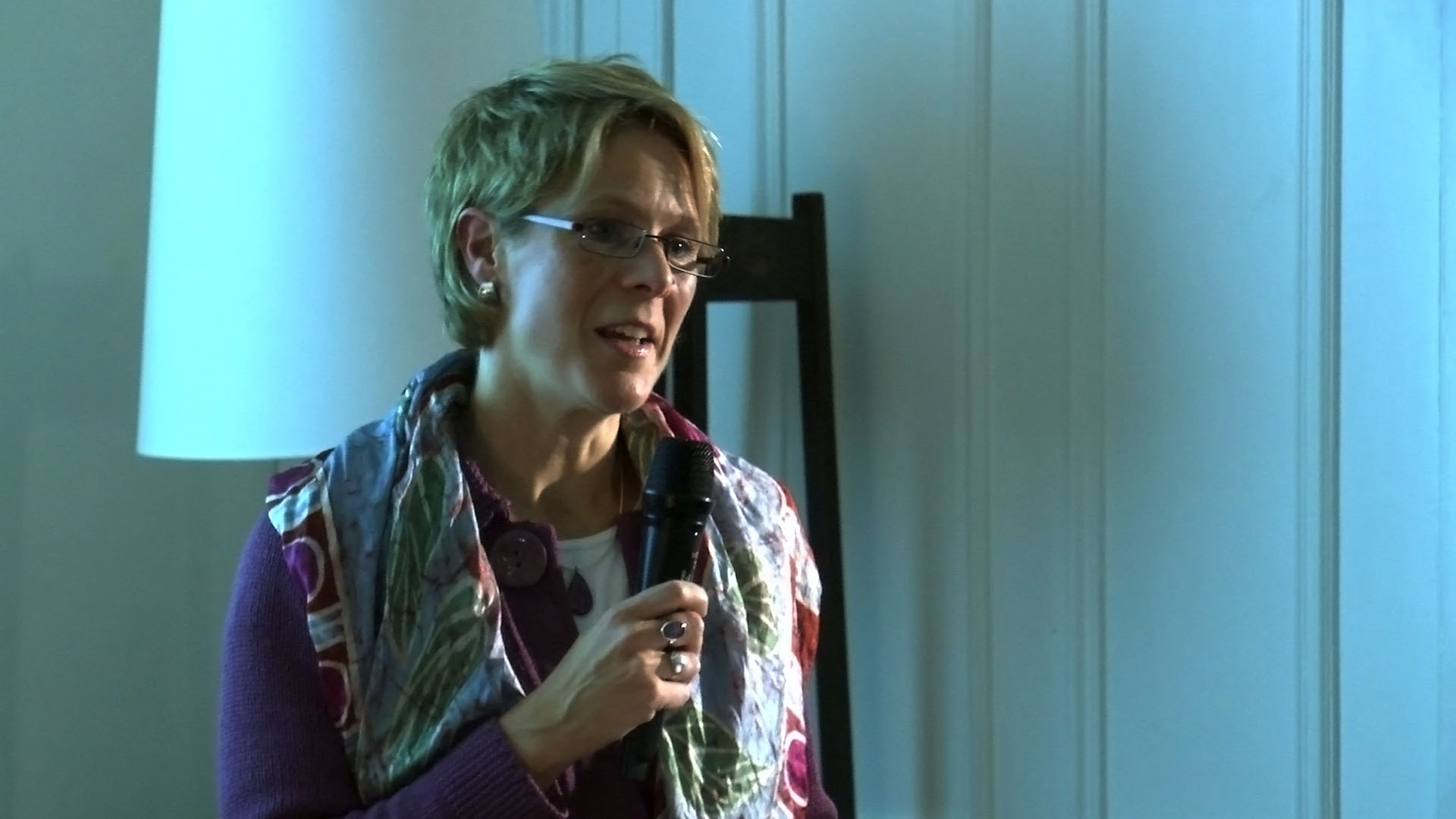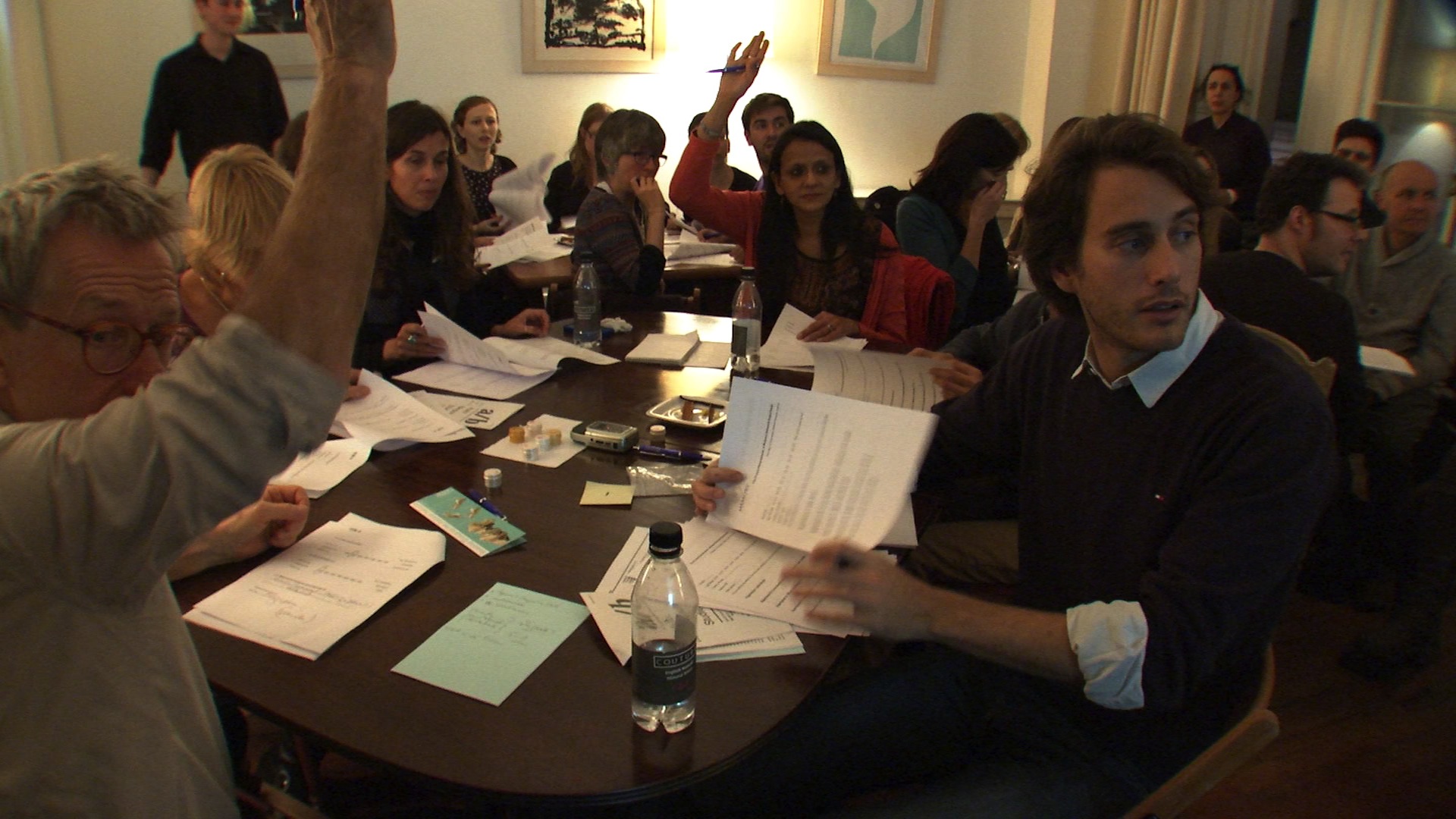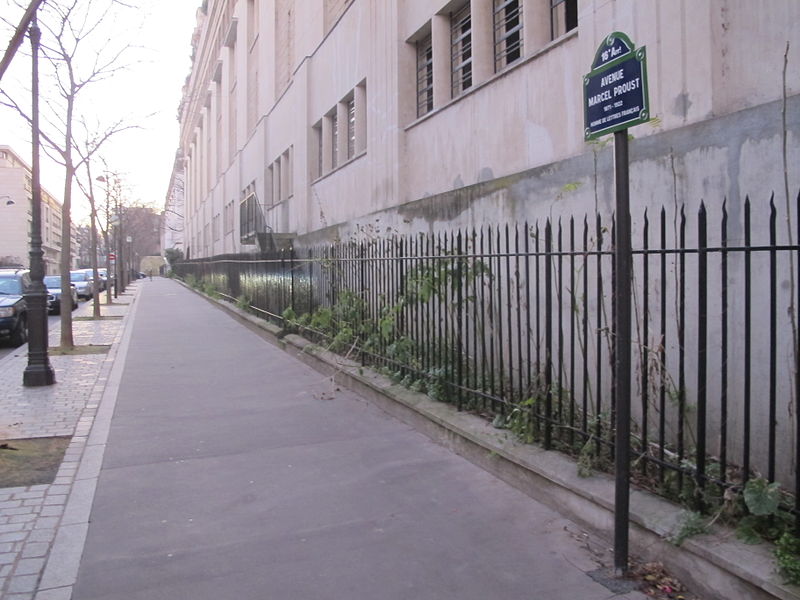‘Avenue Marcel-Proust’ by Celette CC BY-SA
The sight of the little madeleine had recalled nothing to my mind before I tasted it; perhaps because I had so often seen such things in the interval, without tasting them, on the trays in pastry-cook’s windows, that their image had dissociated itself from those Combray days to take its place among others more recent; perhaps because of those memories, so long abandoned and put out of mind, nothing now survived, everything was scattered; the forms of things, including that of the little scallop-shell of pastry, so richly sensual under its severe, religious folds, were either obliterated or had been so long dormant as to have lost the power of expansion which would have allowed them to resume their place in my consciousness. But when from a long-distant past nothing subsists, after the people are dead, after the things are broken and scattered, still, alone, more fragile, but with more vitality, more unsubstantial, more persistent, more faithful, the smell and taste of things remain poised for a long time, like souls, ready to remind us, waiting and hoping for their moment, amid the ruins of all the rest; and bear unfaltering, in the tiny and almost impalpable drop of their essence, the vast structure of recollection.
Marcel Proust, In Search of Lost Time
The ‘Madeleine’ episode, the starting point of Proust’s seven-volume novel of memory and of time, has been understood since its appearance as a major innovation not only in the field of modernist literature but in our understanding of the mind, and of the way in which the workings of the human sensory system can affect our knowledge of ourselves and our own past. The incongruous force of a moment of perfect recall granted by a cake dipped in tea, and of the power of the senses to erase distances across time and space without prompting, gave rise to the concept of the ‘involuntary memory’, and to an accompanying sense of pathos summed up in the novel’s title. This novel, and the literature that took up this theme, explored a certain gap between how we think we perceive the world and ourselves, and how unconscious processes within the body and mind actually define this perception. Recently, neurogastronomer Gordon Shepherd has disputed Proust’s and many a literary critics’ claim that this episode is driven purely by involuntary memories. Actually these memories are not involuntary but the result of metonymic expansion drawing also on voluntary memory: ‘the olfactory cortex [the part of the brain that is the home of our smell] is designed specifically to recall a whole from a small part.’ What does this knowledge do to our understanding of this particular passage and our reading of Proust work in general? Can neuroscience really reveal higher truths about the workings of the human sensory system than Proust’s remarkable art of memory?
The first public event held by the Memory Network was ‘the Proust Phenomenon’, held on the 15th November 2012 at the Institut Francais in London, which addressed itself to these questions. The speakers- Kirsten Shepherd-Barr (Modern Drama, Oxford); John Downes (Neuropsychology, Liverpool John Moores); Sarah McCartney (Perfumer); Barry Smith (Philosophy, School of Advanced Study)- discussed the changing relationship between literature and science in the twenty-first century with this episode as their starting point.

In order to investigate and contextualise the questions through these discussions, we invited members of the general audience to take part in a series of experiments involving a comparison of different sensory responses, and the recording of the audience’s autobiographical memories triggered by the ‘blind’ smelling of laboratory-generated scents, conducted by Memory Network member Jon Silas (Psychology, University of Roehampton). In the report below he discusses what can be learned from the data gathered:

Non-technical summary
We can make some specific observations based on the experimental data. In terms of specific smells, vanilla and cherry were identified as less familiar and less recognisable compared to cinnamon and lemon. But those few who correctly identified vanilla and cherry thought them less intense than those who couldn’t identify them. This is likely a demonstration of the fact that our sensory perceptions are related to our understanding and concept of a smell.
For most smells how emotional a smell was rated was directly related to how vivid that smell was (except for vanilla). This suggests that our emotional experience of a smell is closely related to our ability to form a mental image of that smell. However, recall of a smell was not related to how emotional we think that smell is except in the case of cinnamon. The better someone recalled cinnamon the less they said it evoked an emotional response. This unique emotional profile of cinnamon may be due to cinnamon being emotional as a smell but not as a concept; once identified in memory cinnamon seems to be identified as less emotional.
Overall, the data seem to suggest a close relationship between our mental image of a smell and its perceptual properties – both influence each other. Cinnamon seems to have a unique emotional relationship to us and is unlike other common smells.
Click here to read a more detailed analysis of the data gathered

Reports from two of our volunteers can be found through the links below:
http://artandperfume.blogspot.co.uk/2012/11/last-night-at-memory-network-we.html
http://sarahhousley.wordpress.com/2012/11/24/the-proust-phenomenon
A report in Times Higher Education can be found at: http://www.timeshighereducation.co.uk/story.asp?sectioncode=26&storycode=421741


